October 31, 2015 – Today we leave our fancy digs at the Golden Village Palms RV Resort in Hemet, CA and head off down the road to the Springs at Borrego RV Resort located in Borrego Springs, CA. Our week in Hemet was everything we were looking for and more, lots of pool & hot tub time, hot days, warm evenings and friendly staff.
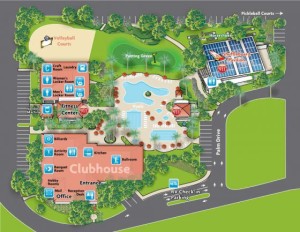
This RV Resort is the largest in California, over 1000 sites that include everything you can imagine. 3 pools, 3 hot tubs, 7 pool tables, 2 outdoor volleyball courts, several pickle ball courts and horseshoe pits, a fully equipped activity room and a laundry room with too many washers & dryers to count; and yes there is more.
We did a little shopping in town, found the Post Office, Harbor Freight, Walmart, and a couple of restaurants. We did have a leak in our bathroom sink so we had a local RV Tech swing by to sort that out. We also took a short excursion to meet Joe McGinnis, a new Wagon-Master, to Beaumont, 30 minutes north on Hwy 79.

Nine (9) days earlier we picked up the van (really the van picked us up) after DuPratt Ford installed the new transmission and headed off to our friends, Lee & Terry in Modesto, CA less than 3 hours away. I must say the transmission has never shifted smoother, kudos to Nick and Rn DuPratt Ford in Dixon, they had all the warranty work accomplished in a few days remarkable given the Ford dealership I first contacted in Fairfield could not even look at the van for a week.
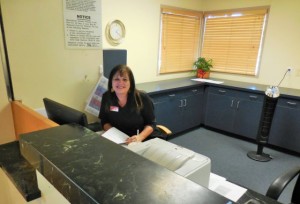
When we arrived in Modesto, Terry & Lee had just returned from many weeks on the road and were still unpacking from their journey eastward. It was great to see them again, they are so hospitable. We had planned to meet them in Hemet at the RV Park but everything was delayed with our breakdown. On Friday they took us to Gallo Theatre of the Performing Arts to listen to their son Chandler play with a local artist (Willie T), very enjoyable, Chandler is a real talent.

Saturday morning we were off to Hemet and our RV Resort week, in theory just over 6 hours driving time away. Heading down Hwy 99 all was well, clipping along at 90 plus km per hour. Joining the I-5 we continued at a steady pace and then headed east on the Hwy 210, after 20 minutes we were in bumper to bumper traffic for 45 minutes, maybe 10 miles an hour. What was the holdup? From what we could see just volume. A couple of moves directed by Molly (my name for our GPS) we were eastbound on Hwy 60, not far now I said. Wrong, another 30 minutes bumper to bumper, this time it was caused by an accident. We left Modesto at 7:45 am and arrived in Hemet at 5:45 pm, almost 2 hours longer than I had estimated, oh well.

Did You Know?
Hemet is a city in the San Jacinto Valley in Riverside County, California, United States. It covers a total area of 27.847 square miles (72 km2), about half of the valley, which it shares with the neighboring city of San Jacinto. The population was 78,657 at the 2010 census. The founding of Hemet predates the formation of Riverside County. The formation of Lake Hemet helped the city to grow and stimulated agriculture in the area. The city is known for being the home of The Ramona Pageant, California’s official outdoor play. Started in 1923, the play is one of the longest running outdoor plays in the United States. Hemet has been named a Tree City USA for 20 years by the Arbor Day Foundation for its dedication to the local forest.
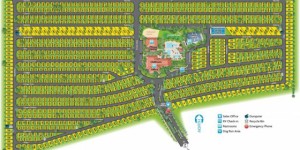
History
The Cahuilla tribe were the initial inhabitants of the Hemet area. During the early 19th century, the land was used for cattle ranching by Mission San Luis Rey, which named the area Rancho San Jacinto. When the missions were broken up by the Mexican government, the land was awarded to Jose Antonio Estudillo in 1842. The area’s original inhabitants, the Soboba Cahuilla were moved to the Indian reservation near San Jacinto.
Cahuilla People
The Iviatim are Native Americans of the inland areas of southern California. Their original territory included an area of about 2,400 square miles (6,200 km2). The traditional Cahuilla territory was near the geographic center of Southern California. It was bounded to the north by the San Bernardino Mountains, to the south by Borrego Springs and the Chocolate Mountains, to the east by the Colorado Desert, and to the west by the San Jacinto Plain and the eastern slopes of the Palomar Mountains
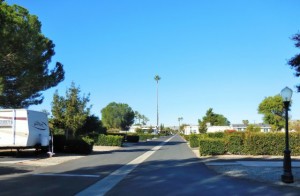
The first encounter with Europeans was in 1774, when Juan Bautista de Anza was looking for a trade route between Sonora and Monterey in Alta California. Living far inland, the Cahuilla had little contact with Spanish soldiers, priests, or missionaries. Many of the Europeans viewed the desert as having little or no value, but rather a place to avoid. The Cahuilla learned of Spanish missions and their culture from Indians living close to missions in San Gabriel and San Diego. The Cahuilla provided the vaqueros that worked for the owners of the Rancho San Bernardino, and provided security against the raids of the tribes from the desert and mountains on its herds.
The Cahuilla did not encounter Anglo-Americans until the 1840s. Chief Juan Antonio, leader of the Cahuilla Mountain Band, gave traveler Daniel Sexton access to areas near the San Gorgonio Pass in 1842. The Mountain Band also lent support to a U.S. Army expedition led by Lieutenant Edward Fitzgerald Beale, defending the party against attacks by Wakara and his band of Ute warriors.

During the Mexican-American War, Chief Juan Antonio led his warriors to join Californios led by José del Carmen Lugo in attacking their traditional enemy, the Luiseño. Lugo led this action in retaliation for the Pauma Massacre, in which the Luiseno had killed 11 Californios. The combined forces staged an ambush and killed 33-40 of the Luiseno warriors, an event that became known as the Temecula Massacre of 1847. (Academic historians disagree on the exact number of deaths, the estimate is 33-40; Luiseno oral tradition holds that more than 100 warriors were killed.) In the treaty ending the war with Mexico, the US promised to honor Mexican land grants and policies. These included recognition of Native American rights to inhabit certain lands, but European-American encroachment on Indian lands became an increasing problem after the US annexed California
Hemet History
The City of Hemet owes its inception and initial growth to two ironic events and the dedication of two wealthy men. The first event was the visit that Ramona author Helen Hunt Jackson made to the San Jacinto Valley in 1883 in order to gather material on the Sobobas, a group of Mission Indians living on the east side of the San Jacinto River. Mrs. Jackson was accompanied to the valley by her interpreter, Abbot Kinney. During their visit, Jackson and Kinney stayed at various ranches and met numerous valley and mountain residents, notably Charles Thomas and Hancock McClung Johnston. Thomas and Johnston owned ranches in the San Jacinto Mountains where they raised race horses in what was then called Hemet Valley. From these two men and others, Kinney undoubtedly learned about the 1882 court case wherein the lands of the Rancho San Jacinto Viejo were partitioned to various individuals, some of whom envisioned making a profit from their holdings if a sufficient water supply could be developed. Kinney also learned about and saw a potential reservoir site in Hemet Valley if a dam was constructed across the South Fork of the San Jacinto River.

The next day, October 15, 1886, Estudillo sold the 3,000 acres to three other men, Edward L. Mayberry, Albert HH. Judson and Peter Potts, under the same terms as those with the Lake Hemet Company. Originally conceived by Abbott Kinney and Hancock M. Johnston, the town of Hemet would now evolve under the watchful eye and ready money of E.L. Mayberry and later, W. Whittier. By December of 1886, Mayberry, Judson and Potts had sold some of their interests in the Estudillo tract to Hancock M. Johnston. Also in that same month, the four men and a San Francisco capitalist friend of the Mayberry’s, William Whittier, acquired another 3,000 acres adjacent to and east of the Estudillo tract from H.T. Hewitt, who owned a hotel and some shops in San Jacinto, about a mile north of Park Hill. The Hewitt agreement included a stipulation that a town site would be located on or near Park Hill.
The Hewitt property provided the basis for the formation of two companies. On January 27, 1887, the Lake Hemet Company and the Hemet Land Company were formed by Johnston, Judson, Mayberry and Whittier, the latter two holding the majority of stock in both companies. The original plans were to build a dam in the mountains to form a reservoir in order to supply water to the lands of the Hemet Land Company, the Estudillo tract and two town sites, Hemet and South San Jacinto.

During 1887 plans were made to lay the first railroad tracks into the San Jacinto Valley. Mayberry and Whittier wanted the Santa Fe Company to run the tracks through the Estudillo tract, to the east line of the Hemet Land Company lands, and then north and west to the town of San Jacinto, thus providing railroad access to Hemet and South San Jacinto land buyers. Instead, the first official train into the valley came in April 1888 to Mayberry’s town site and then turned north, ending at a spot one-half mile from the town of San Jacinto. During the years 1891 – 1895, while the Great Hemet Dam was being built to 122-1/2 feet, the town of Hemet started to take on a look of prosperity. Mayberry built his three-story brick Hotel Mayberry on Florida Avenue between Harvard and State Streets; Whittier built a warehouse, his opera house, and business shops on North Harvard. In 1893, 39 families and businesses in the town of Hemet were buying domestic water from the Lake Hemet Water Company, and farmers were using irrigation water on their alfalfa fields, fruit orchards and row crops, particularly potatoes.

Despite a severe drought in 1898-1900 and a major 1899 Christmas Day earthquake, the town of Hemet continued to prosper. In 1899 Whittier sued Mayberry for monies owed him, taking control of all of Mayberry’s interests in Hemet and in the two companies. Whittier, however, continued to improve the town’s position. He started the Bank of Hemet, built rental cottages and a stock farm with a half-mile race track, established and supplied by the town residents and electricity, a water filter system, and a stage line to Idyllwild.

On November 14, 1909, the San Jacinto Valley Register printed a synopsis of a speech by T.S. Brown, a Hemet real estate agent, in which he urged that the town residents vote for incorporation. On January 11, 1910, residents voted to incorporate as a city, and Brown was elected Hemet’s first mayor. Out of 177 residents, 130 voted to incorporate, with 33 votes against. Those who voted against incorporation were landowners who feared increased taxation. The Order of Incorporation was certified by the County of Riverside on January 17, 1910, and filed with the State of California on January 20, 1910….”That on the 20th day of January 1910, there was filed in my office a copy of the Order of the Board of Supervisors of Riverside County, in said State, duly certified by the County Clerk of said County, whereby certain territory was declared a municipal corporation of the 6th class under the name and style CITY OF HEMET.” Secretary of State, State of California


